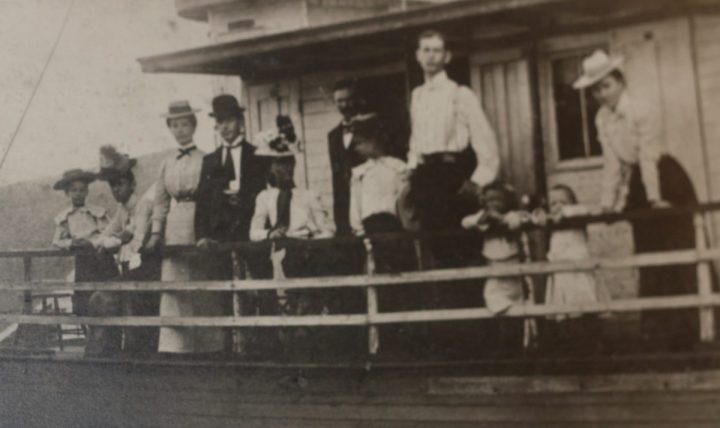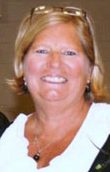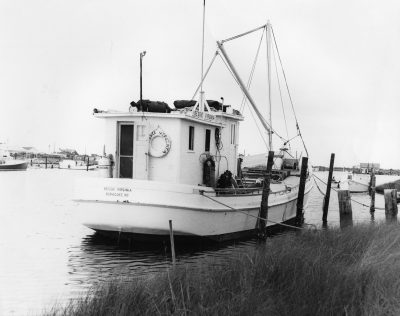
HARKERS ISLAND – For centuries on eastern North Carolina’s coast, boats were the only way to deliver goods, sundries and news, including the latest bits of gossip. Day in and day out, the captains and crews aboard mail boats, work boats and freight boats would weave their vessels through the intricate waterways with only their destination, and delivery, in mind.
Though those days of living by the grace of the tide have largely faded to memory, the role these boats played and the waters through which they maneuvered have been commemorated by the Core Sound Waterfowl Museum and Heritage Center at Harkers Island through “Port Light,” an online exhibit that launches Monday, Feb. 6.
Supporter Spotlight
“Port Light” is an interactive multimedia exhibition about the “Saltwater Highways of the Outer and Inner Banks,” according the museum organizers’ recent announcement. Visitors to the online exhibition will find the written historical summary, oral history audio and archival photography of 12 different vessels that played important roles in North Carolina’s coastal heritage. The digital exhibition features an interactive map that details the routes of the boats.
The project aims to capture the rich histories of the trade, civic and kin connections that extend across the sounds of North Carolina from the Outer Banks to mainland ports, beginning from the first tenuous Colonial settlements to the fishing villages of the early to mid-20th century, when boats were the primary mode of transportation and key to the development of the early United States.

Cultural anthropologist Barbara Garrity-Blake, a principal researcher on the project and resident of Gloucester in Down East Carteret County, explained that the project “traces historical connections from the North Carolina mainland to the Outer Banks by telling the story of specific boats that hauled mail, lumber, fish, people — you name it.”
“We found that people who remember those days are few and far between, so we were fortunate to have collected a handful of new oral histories and mine a treasure trove of older recordings,” she continued. “We want the public to hear the voices and stories, to imagine themselves living in a time when everything depended on boats. The shipping route along the ‘Graveyard of the Atlantic’ off the coast is well known. Less known is our focus: the incredibly important routes that connected banks villages to mainland ports like New Bern, Engelhard and Elizabeth City.”
An Educational Resource
“Port Light” was designed as an educational resource for classrooms, though all are welcome to learn more about the history of these important boats through the online exhibition. Curriculum guides have been tailored toward the North Carolina standard course of study and were written specifically for the eighth-grade social studies curriculum. The guides can be used comprehensively as a unit or abbreviated by selecting preferred components.
Supporter Spotlight

Eighth-grade Manteo Middle School teacher Mary Ann Hodges has used “Port Light” as part of her lesson plan. She explained that her students “had fun finding out lesser-known history about this area,” while using “Port Light” resources and lesson plans in her classroom.
“Several students were inspired to go beyond the assigned project and created community stories that reflected their own family histories,” she said. “The link between home and school is becoming stronger, and that’s always a good thing.”
The Core Sound Waterfowl Museum’s commitment to collecting and sharing the voices of coastal communities with visitors, longtime residents, natives and also folks who have never experienced this part of the world is at the heart of this collective effort, said Karen Amspacher, the museum director.
Amspacher told Coastal Review Online that the project was “a long time coming but originated with the idea of sharing how mainland communities connected to the banks communities via these boats and how banks communities were dependent on these boats for daily life.”

Transportation, supplies and communication were as vital then as today.
“The idea was to explain how these routes, boats and captains impacted history through their work, and even though then it seemed ordinary, it truly was significant to the region, both mainland and the isolated villages,” she continued. “There are amazing stories of getting people and supplies back and forth and this project has helped share them.”
The educational slant also is an important aspect to Amspacher.
“As a former teacher, I am especially eager to get this project into classrooms across the state as they learn more about coastal North Carolina settlement. This project will hopefully inspire teachers and students on the banks, Down East and along the coast, to discuss today’s lifestyle and relative ease of communication and transportation and then compare to these stories.”

Amspacher said the project leaders will meet with teachers at the North Carolina Center for the Advancement of Teaching, or NCCAT, hold conferences and engage educators through social media to encourage and support interaction with the online exhibition.
“We plan to add their successes to the blog and add additional stories to our collection. Hopefully this will be a working growing collection of multi-generational stories of coastal community life past and present,” she said.
“Port Light” was funded by the National Park Service Maritime Heritage Program. Amspacher, Garrity-Blake and Susan West, a fisheries specialist and journalist from Buxton, were the principal researchers on the project. Project partners include the Bit & Grain creative project team that designed the digital exhibit and Dare County Schools Media Specialist Mollee Holloman, who developed the “Port Light” curricula for North Carolina eighth-graders.
The Core Sound Waterfowl Museum and Heritage Center is “at the end of the road” on Harkers Island and serves as gathering place for heritage and traditions grounded in the natural beauty of Core Sound, providing a unique blend of people, place and community. The museum provides educational programming year-round, supports an active oral history program and works toward the economic sustainability of the region’s rural coastal communities while preserving its living traditions and protecting its vital natural resources.








